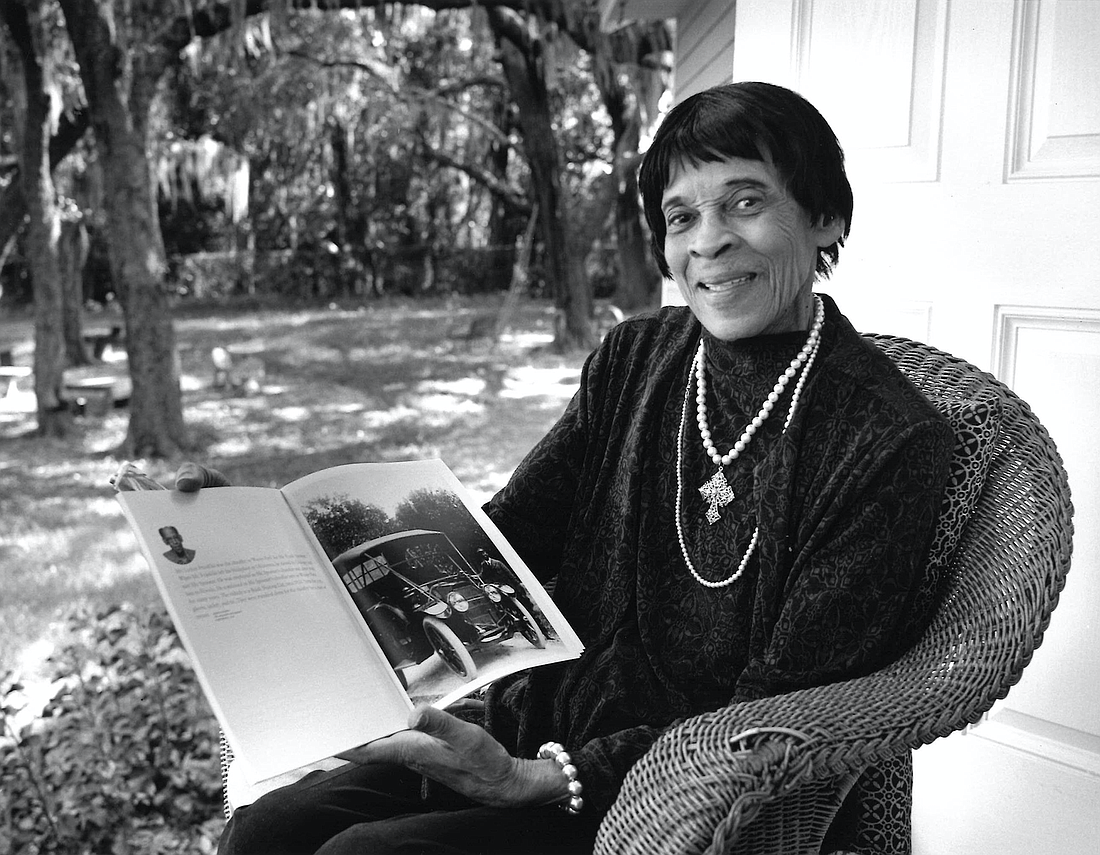- April 25, 2024
-
-
Loading

Loading

The story of a community is one that’s constantly being written. Old and present generations add to the pages and leave something for the future to add and build upon. African-American residents in the west side of Winter Park celebrated the elders of their community Friday, April 12, with the opening reception of “The Sage Project Phase II: Hannibal Square Elders Tell Their Stories.”
The Sage Project Phase II is a collection at the Hannibal Square Heritage Center of 17 portraits and life stories of senior residents now in their 80s and 90s.
Each of the residents captured in the portraits — referred to as “sages” in the exhibit — is a native or longtime resident of Winter Park’s west side community.
“It is special on many levels,” Hannibal Square Heritage Center Executive Director Barbara Chandler said. “We call this a very home-grown exhibition. … This is the way of the elders being able to share their stories before they pass. Their stories impact us in so many different ways. … These stories are a legacy to what keeps Hannibal Square what it is — these are the people.”
It’s a collection of life histories captured by Hannibal Square historians Fairolyn Livingston and Mary Daniels through a series of interviews. The accompanying portraits were captured by photographer and Crealdé School of Art CEO/Executive Director Peter Schreyer.
“It really was rewarding and humbling,” Daniels said. “It’s educational too because you learn so much more than you thought you knew in hearing their personal stories and their journey.”
Each sage family was given their own copy of the photograph and bio — an item that will stay in the family for generations. It’s an incredibly rewarding project to be a part of, Schreyer said.
“It’s the best the arts can get in my book,” he said. “This is better than being in a great museum or collection or anything. These are archival prints — these pictures will outlive all of us. To know that each person has one … it’s so beautiful.”
Chandler said Livingston and Daniels choose the sages based on a number of reasons: their time growing up in the community, their vocation in the community, whether they went to church or whether they have advocated for the community, among many other factors.
“It’s to celebrate the everyday man and woman and their contributions to the community,” Chandler said.
One of those sages featured in the collection is the Rev. Hayward Cleveland, who was born in 1931 in Winter Park. He was an auto mechanic before he was called to work in ministry.
Cleveland said he was thrilled to be a part of the project.
“I think it’s a splendid thing,” he said. “It’s wonderful to be able to participate in this, because of the fact that it gives us a chance to tell what we did and how we’ve come along. All of this has changed — this used to be dirt streets. Right here used to be a tangerine garden.”
There’s also Glenn Lenora Smith Franklin, who was born in 1937 and moved to Winter Park with her husband in 1987.
The portrait project was a special experience, Franklin said.
“It was beautiful,” she said. “I just wish my husband was here.”
“I think it’s wonderful.”
“The Sage Project Phase II” adds to an existing permanent collection that dates back to 2012.
Chandler said she hopes visitors that see the exhibit take something special from it — and also feel a call to action.
“The charge is always for them to go back and find out the history of their elders — their sage in their community,” Chandler said. “A lot of times there’s so many untold stories and without those stories we kind of repeat the same patterns. Having those stories dug out and brought to the forefront is the charge.”